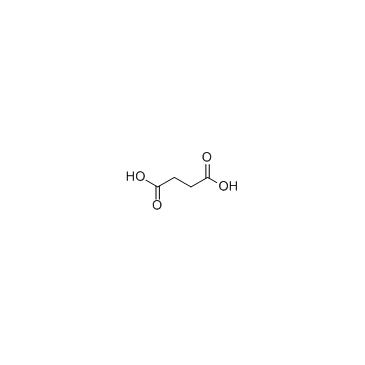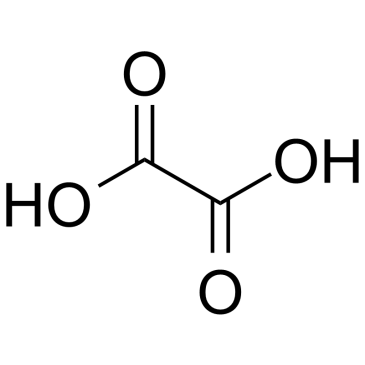141-95-7
| 中文名 | 丙二酸钠盐一水合 |
|---|---|
| 英文名 | sodium malonate |
| 中文别名 |
缩水苹果酸钠
丙二酸二钠盐 丙二酸钠 丙二酸钠盐 |
| 英文别名 |
Malonic acid disodium salt monohydrate
MFCD00002708 Malonic acid, disodium salt Disodium malonate sodium malonate EINECS 205-514-0 disodium propanedioate MALONIC ACID DISODIUM SALT 1,3-Propanedioic acid disodium salt Propanedioic acid, sodium salt (1:2) |
| 密度 | 1.546g/cm3 |
|---|---|
| 沸点 | 386.8ºC at 760mmHg |
| 分子式 | C3H2Na2O4 |
| 分子量 | 148.025 |
| 闪点 | 201.9ºC |
| 精确质量 | 147.974854 |
| PSA | 80.26000 |
| 外观性状 | 白色结晶粉末 |
| 储存条件 | 密封保存。采用塑料袋,外加编织袋包装。按一般化学品规定贮运。 |
| 稳定性 | 1.常温常压下稳定。 2.本品低毒。大鼠腹腔注射LD501100mg/kg,家兔皮下注射最低致死量1584mg/kg。 |
| 水溶解性 | H2O: 1 M at 20 °C, clear, colorless |
| 计算化学 | 1.疏水参数计算参考值(XlogP):无 2.氢键供体数量:0 3.氢键受体数量:4 4.可旋转化学键数量:0 5.互变异构体数量:无 6.拓扑分子极性表面积80.3 7.重原子数量:9 8.表面电荷:0 9.复杂度:72.1 10.同位素原子数量:0 11.确定原子立构中心数量:0 12.不确定原子立构中心数量:0 13.确定化学键立构中心数量:0 14.不确定化学键立构中心数量:0 15.共价键单元数量:3 |
| 更多 | 一、物性数据 1. 性状:白色晶体 2. 溶解性:可溶于水,不溶于醇、醚和苯 |
Synonym:Disodium Malonate; Propanedioic Acid, Disodium Sal Section 2 - COMPOSITION, INFORMATION ON INGREDIENTS
Risk Phrases: None Listed. Section 3 - HAZARDS IDENTIFICATION EMERGENCY OVERVIEW
The toxicological properties of this material have not been fully investigated. Potential Health Effects Eye: May cause eye irritation. The toxicological properties of this material have not been fully investigated. Skin: May cause skin irritation. The toxicological properties of this material have not been fully investigated. Ingestion: May cause irritation of the digestive tract. May cause cardiac disturbances. The toxicological properties of this substance have not been fully investigated. Inhalation: May cause respiratory tract irritation. The toxicological properties of this substance have not been fully investigated. Chronic: May cause digestive tract and cardiac disturbances. Section 4 - FIRST AID MEASURES Eyes: Flush eyes with plenty of water for at least 15 minutes, occasionally lifting the upper and lower eyelids. Get medical aid. Skin: Flush skin with plenty of water for at least 15 minutes while removing contaminated clothing and shoes. Get medical aid if irritation develops or persists. Wash clothing before reuse. Ingestion: Never give anything by mouth to an unconscious person. Get medical aid. Do NOT induce vomiting. If conscious and alert, rinse mouth and drink 2-4 cupfuls of milk or water. Wash mouth out with water. Inhalation: Remove from exposure and move to fresh air immediately. If not breathing, give artificial respiration. If breathing is difficult, give oxygen. Get medical aid if cough or other symptoms appear. Notes to Physician: Section 5 - FIRE FIGHTING MEASURES General Information: As in any fire, wear a self-contained breathing apparatus in pressure-demand, MSHA/NIOSH (approved or equivalent), and full protective gear. During a fire, irritating and highly toxic gases may be generated by thermal decomposition or combustion. Extinguishing Media: Use agent most appropriate to extinguish fire. Use water spray, dry chemical, carbon dioxide, or appropriate foam. Section 6 - ACCIDENTAL RELEASE MEASURES General Information: Use proper personal protective equipment as indicated in Section 8. Spills/Leaks: Vacuum or sweep up material and place into a suitable disposal container. Clean up spills immediately, observing precautions in the Protective Equipment section. Avoid generating dusty conditions. Provide ventilation. Section 7 - HANDLING and STORAGE Handling: Wash thoroughly after handling. Use with adequate ventilation. Minimize dust generation and accumulation. Avoid breathing dust, vapor, mist, or gas. Avoid contact with eyes, skin, and clothing. Avoid contact with skin and eyes. Keep container tightly closed. Avoid ingestion and inhalation. Use only in a chemical fume hood. Storage: Store in a tightly closed container. Store in a cool, dry, well-ventilated area away from incompatible substances. Section 8 - EXPOSURE CONTROLS, PERSONAL PROTECTION Engineering Controls: Facilities storing or utilizing this material should be equipped with an eyewash facility and a safety shower. Use adequate ventilation to keep airborne concentrations low. Exposure Limits CAS# 141-95-7: Personal Protective Equipment Eyes: Wear appropriate protective eyeglasses or chemical safety goggles as described by OSHA's eye and face protection regulations in 29 CFR 1910.133 or European Standard EN166. Skin: Wear appropriate protective gloves to prevent skin exposure. Clothing: Wear appropriate protective clothing to prevent skin exposure. Respirators: Follow the OSHA respirator regulations found in 29 CFR 1910.134 or European Standard EN 149. Use a NIOSH/MSHA or European Standard EN 149 approved respirator if exposure limits are exceeded or if irritation or other symptoms are experienced. Section 9 - PHYSICAL AND CHEMICAL PROPERTIES Physical State: Powder Color: white Odor: Not available. pH: Not available. Vapor Pressure: Not available. Viscosity: Not available. Boiling Point: Not available. Freezing/Melting Point: 966 deg C Autoignition Temperature: Not applicable. Flash Point: Not applicable. Explosion Limits, lower: Not available. Explosion Limits, upper: Not available. Decomposition Temperature: Not available. Solubility in water: soluble in water Specific Gravity/Density: Not available. Molecular Formula: CH2(COONa)2 Molecular Weight: 147.9912 Section 10 - STABILITY AND REACTIVITY Chemical Stability: Stable under normal temperatures and pressures. Conditions to Avoid: Incompatible materials, dust generation, excess heat. Incompatibilities with Other Materials: Oxidizing agents. Hazardous Decomposition Products: Carbon monoxide, irritating and toxic fumes and gases, carbon dioxide, toxic fumes of sodium oxide. Hazardous Polymerization: Has not been reported. Section 11 - TOXICOLOGICAL INFORMATION RTECS#: CAS# 141-95-7: OO1750000 LD50/LC50: Not available. Carcinogenicity: Sodium Malonate - Not listed by ACGIH, IARC, or NTP. Other: See actual entry in RTECS for complete information. Section 12 - ECOLOGICAL INFORMATION Section 13 - DISPOSAL CONSIDERATIONS Products which are considered hazardous for supply are classified as Special Waste and the disposal of such chemicals is covered by regulations which may vary according to location. Contact a specialist disposal company or the local waste regulator for advice. Empty containers must be decontaminated before returning for recycling. Section 14 - TRANSPORT INFORMATION IATA No information available. IMO No information available. RID/ADR No information available. Section 15 - REGULATORY INFORMATION European/International Regulations European Labeling in Accordance with EC Directives Hazard Symbols: Not available. Risk Phrases: Safety Phrases: S 28A After contact with skin, wash immediately with plenty of water. S 37 Wear suitable gloves. S 45 In case of accident or if you feel unwell, seek medical advice immediately (show the label where possible). WGK (Water Danger/Protection) CAS# 141-95-7: No information available. Canada CAS# 141-95-7 is listed on Canada's DSL List. CAS# 141-95-7 is not listed on Canada's Ingredient Disclosure List. US FEDERAL TSCA CAS# 141-95-7 is listed on the TSCA inventory. SECTION 16 - ADDITIONAL INFORMATION N/A |
|
毒理学数据: 二、毒理学数据: 1、急性毒性:大鼠腹腔LD50:1100 mg/kg; 小鼠腹腔LD50:1550 mg/kg 小鼠静脉LD50:2100 mg/kg; 兔子皮下LDLo:1584 mg/kg 兔子静脉LD50:660 mg/kg。 生态学数据: 三、生态学数据: 通常对水是不危害的,若无政府许可,勿将材料排入周围环境。 CHEMICAL IDENTIFICATION
HEALTH HAZARD DATAACUTE TOXICITY DATA
|
| 个人防护装备 | Eyeshields;Gloves;type N95 (US);type P1 (EN143) respirator filter |
|---|---|
| 安全声明 (欧洲) | S22-S24/25 |
| 危险品运输编码 | NONH for all modes of transport |
| WGK德国 | 3 |
| RTECS号 | OO1750000 |
| 海关编码 | 2917190090 |
|
~% 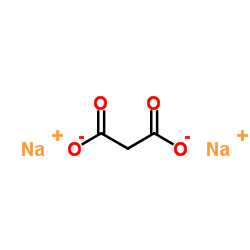
141-95-7 |
| 文献:Radiochemistry, , vol. 46, # 2 p. 107 - 110 |
| 上游产品 1 | |
|---|---|
| 下游产品 10 | |
| 海关编码 | 2917190090 |
|---|---|
| 中文概述 | 2917190090 其他无环多元羧酸. 增值税率:17.0% 退税率:9.0% 监管条件:无 最惠国关税:6.5% 普通关税:30.0% |
| 申报要素 | 品名, 成分含量, 用途, 对苯二甲酸请注明4-CBA值, 对苯二甲酸请注明P-TL酸值, 对苯二甲酸请注明色度, 对苯二甲酸请注明水分 |
| Summary | 2917190090 acyclic polycarboxylic acids, their anhydrides, halides, peroxides, peroxyacids and their derivatives VAT:17.0% Tax rebate rate:9.0% Supervision conditions:none MFN tariff:6.5% General tariff:30.0% |


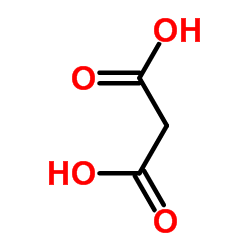

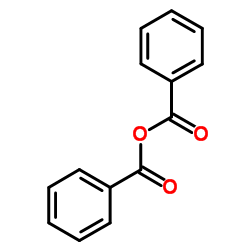


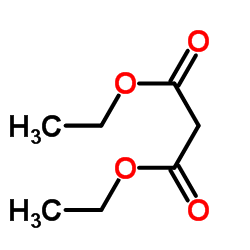

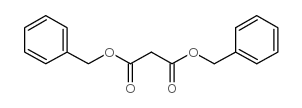

![Titanium, bis(h5-2,4-cyclopentadien-1-yl)[propanedioato(2-)-O,O']-(9CI)结构式](https://image.chemsrc.com/caspic/437/78966-10-6.png)
